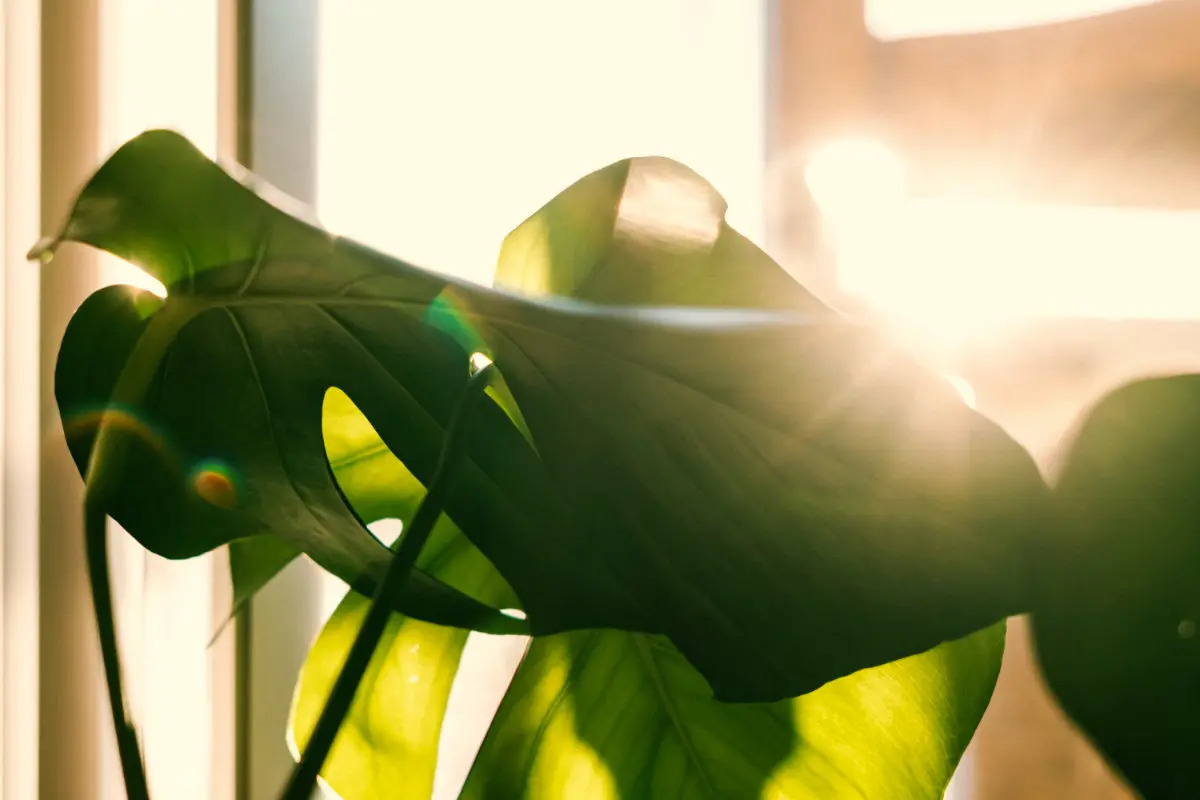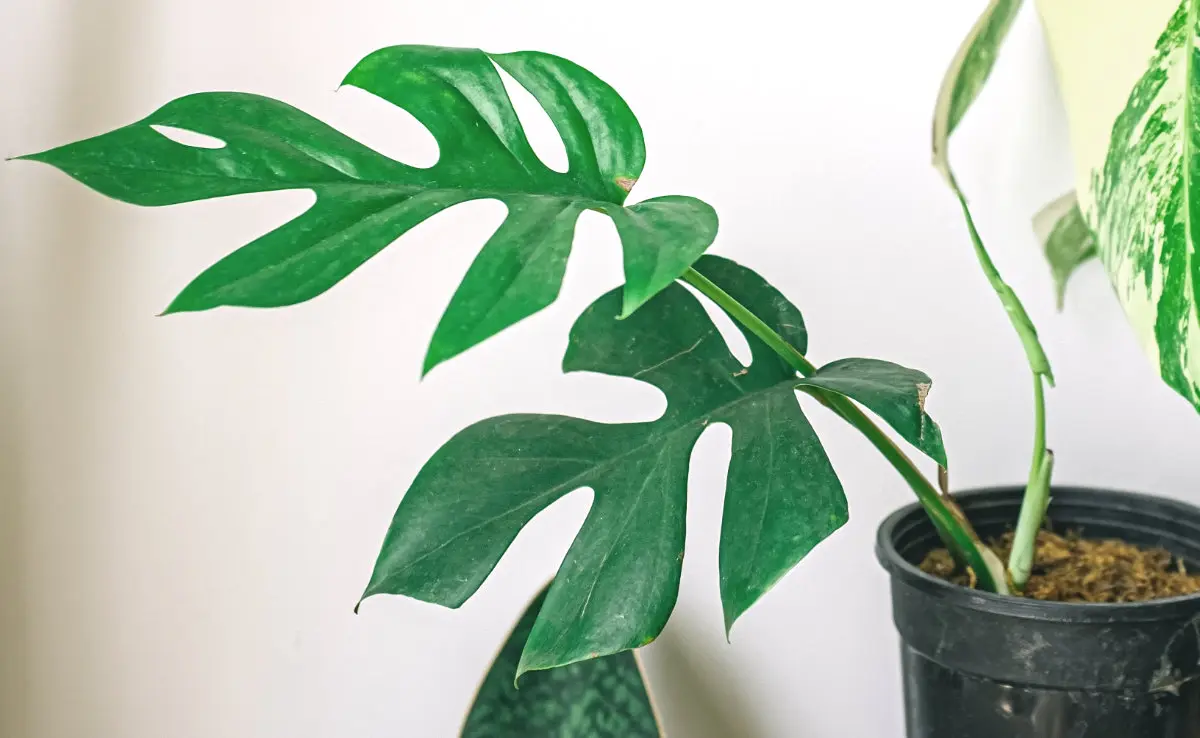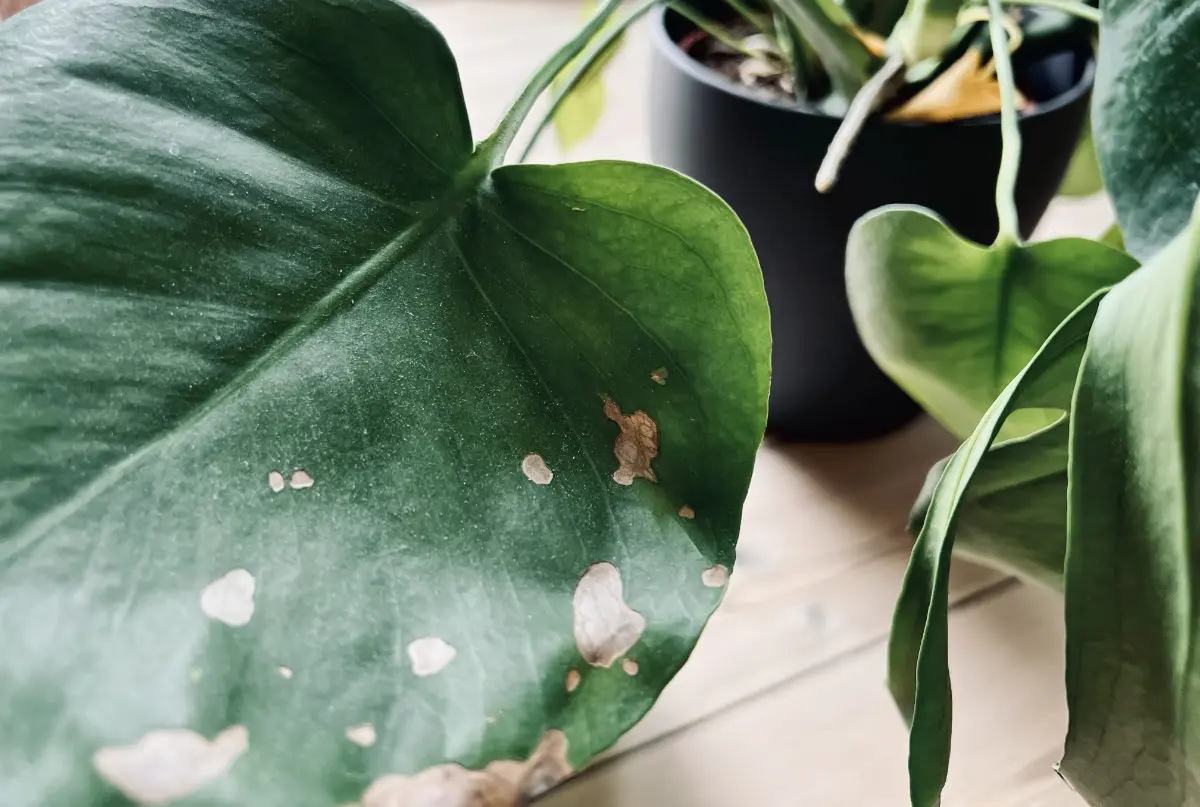The Ultimate Guide to Monstera Light Needs
Monstera plants are popular indoor plants with unique and attractive foliage. Learn about their light needs and how to provide the best lighting conditions to keep your monstera healthy and thriving.
By Tobias Holm
Are you a proud plant parent, looking to keep your Monstera plant thriving and flourishing? Look no further.
In this comprehensive guide, we will delve into the essential light needs of your Monstera plant, ensuring that it receives the optimal amount of light to thrive and grow.
From understanding the different light requirements of indoor and outdoor Monstera plants to providing tips on how to position your plant for maximum sunlight exposure, we've got you covered.
Whether you're a seasoned green thumb or a beginner in the world of plant care, this ultimate guide will equip you with the knowledge and strategies needed to create the perfect lighting conditions for your Monstera.
So, let's dive in and discover the secrets to keeping your Monstera plant happy, healthy, and vibrant.
Understanding the light needs of Monstera plants
Monstera plants, also known as Swiss Cheese plants, are native to the tropical rainforests of Central and South America. In their natural habitat, these plants thrive under the dappled sunlight that filters through the dense canopy of trees. Understanding their light requirements is crucial for replicating their natural environment and ensuring their optimal growth.
Monstera plants are considered to be medium to high light plants. This means that they require bright, indirect light to thrive. Direct sunlight can scorch their leaves, while too little light can result in stunted growth and pale foliage. The ideal light conditions for Monstera plants are those that mimic the filtered, indirect light they receive in their natural habitat.
To determine the light needs of your Monstera plant, you should consider factors such as the intensity, duration, and quality of light it receives. By understanding these factors, you can create the perfect lighting conditions for your Monstera and ensure its long-term health and vibrancy.
Differentiating between direct and indirect sunlight
Before we dive into the specific light needs of Monstera plants, it's important to understand the difference between direct and indirect sunlight. Direct sunlight refers to the unfiltered, intense rays of the sun that hit a plant's leaves directly. This type of sunlight can be too harsh for Monstera plants and can lead to sunburn or leaf damage.
Indirect sunlight, on the other hand, refers to the light that reaches a plant after passing through a filter, such as the leaves of other plants or a sheer curtain. This type of sunlight provides a gentle, diffused light that is ideal for Monstera plants. It mimics the dappled light they would receive in their native rainforest habitat.
When positioning your Monstera plant, it's important to ensure that it receives bright, indirect light throughout the day. Avoid placing it in direct sunlight, especially during the hottest parts of the day. By understanding the difference between direct and indirect sunlight, you can ensure that your Monstera plant receives the right amount of light to thrive.
Assessing the natural light conditions in your home
Now that you understand the light needs of Monstera plants, it's time to assess the natural light conditions in your home. The amount and quality of natural light your Monstera receives will play a crucial role in its overall health and growth.
Start by identifying the different areas of your home that receive natural light. Observe the intensity and duration of light in each location throughout the day. Consider factors such as the direction your windows face, the presence of any obstructions that may block or filter light, and the amount of shade or direct sunlight each area receives.
Ideally, you want to find a location in your home that provides bright, indirect light for most of the day. South-facing windows tend to receive the most intense light, while north-facing windows receive the least. East and west-facing windows provide a balance of light throughout the day. By identifying the natural light conditions in your home, you can choose the best location for your Monstera plant.
Choosing the right location for your Monstera plant
Now that you have assessed the natural light conditions in your home, it's time to choose the right location for your Monstera plant. Remember, Monstera plants thrive in bright, indirect light.
Here are some tips to help you find the perfect spot for your plant:
- South-facing windows: If you have south-facing windows that receive bright, indirect light for most of the day, this is an ideal location for your Monstera plant. Just make sure to position it a few feet away from the window to prevent direct sunlight from reaching its leaves.
- East or west-facing windows: If your home has east or west-facing windows, these can also provide suitable light conditions for your Monstera plant. These windows receive a balance of light throughout the day, which is beneficial for the plant's growth.
- North-facing windows: While north-facing windows receive the least amount of direct sunlight, they can still provide adequate light for your Monstera plant. Just make sure to position it closer to the window to maximize light exposure.
Remember, the goal is to provide your Monstera plant with bright, indirect light. Monitor the light conditions in your chosen location and make adjustments as needed.
By selecting the right location for your Monstera plant, you are setting it up for success and ensuring its long-term health and vitality.
Supplementing natural light with artificial lighting
In some cases, the natural light conditions in your home may not be sufficient to meet the light needs of your Monstera plant. This is especially true if you live in a location with limited sunlight or have windows that are obstructed by buildings or trees. In such situations, you can supplement natural light with artificial lighting.
Artificial lighting provides a convenient solution for ensuring that your Monstera plant receives the right amount of light. There are various types of artificial lights available, including fluorescent lights, LED lights, and grow lights. When choosing artificial lighting for your Monstera, consider the following factors:
- Light intensity: Different types of artificial lights emit different levels of light intensity. Look for lights that provide a similar intensity to natural sunlight to ensure optimal growth for your Monstera plant.
- Light spectrum: The light spectrum refers to the different colors of light emitted by a light source. For Monstera plants, a full spectrum light that includes both cool and warm colors is ideal.
- Light duration: Monstera plants require a minimum of 12-14 hours of light each day for optimal growth. Consider using timers to ensure a consistent light schedule for your plant.
When supplementing natural light with artificial lighting, it's important to position the lights at an appropriate distance from your Monstera plant.
Follow the manufacturer's instructions for the recommended distance based on the type of light you are using. By supplementing natural light with artificial lighting, you can ensure that your Monstera receives the optimal amount of light it needs to thrive.
Common signs of inadequate or excessive light
Understanding how light affects your Monstera plant is essential for providing the right conditions for its growth. Both inadequate and excessive light can have detrimental effects on your Monstera's health. Here are some common signs to look out for:
Inadequate light:
If your Monstera is not receiving enough light, it may exhibit the following signs:
- Stunted growth: Insufficient light can cause your Monstera to grow slowly or not at all.
- Pale foliage: The leaves of your Monstera may appear pale or yellowish, indicating a lack of chlorophyll production.
- Leggy growth: Your Monstera may develop long, weak stems as it stretches towards the nearest light source.
- Small leaves: Inadequate light can result in smaller leaf size.
Excessive light:
If your Monstera is exposed to too much light, it may show the following signs:
- Leaf burn: Direct sunlight can cause brown patches or scorch marks on the leaves of your Monstera.
- Leaf discoloration: Excessive light can cause the leaves to turn yellow or develop bleached spots.
- Wilting: Your Monstera may wilt or show signs of stress if it is exposed to intense light for prolonged periods.
- Leaf drop: In severe cases, your Monstera may shed leaves due to excessive light stress.
By being vigilant and observing any signs of inadequate or excessive light, you can make the necessary adjustments to ensure that your Monstera receives the optimal amount of light for its growth and well-being.
Adjusting light exposure during different seasons
As the seasons change, so do the natural light conditions in your home. It's important to adjust the light exposure for your Monstera plant accordingly to ensure its continued health and growth.
During the summer months, when the days are longer and the sunlight is more intense, you may need to provide some shade for your Monstera to protect it from excessive light. This can be done by using sheer curtains or moving the plant slightly away from the window to reduce the intensity of direct sunlight.
In contrast, during the winter months, when the days are shorter and the sunlight is less intense, you may need to provide additional light to compensate for the reduced natural light. This can be achieved by using artificial lighting, such as fluorescent or LED grow lights, to supplement the natural light your Monstera receives.
By adjusting the light exposure for your Monstera plant during different seasons, you can ensure that it continues to thrive and grow throughout the year, regardless of the changing natural light conditions.
Tips for maintaining optimal light conditions
Now that you have a solid understanding of the light needs of your Monstera plant, here are some additional tips to help you maintain optimal light conditions:
- Rotate your plant: To ensure even growth and prevent your Monstera from leaning towards the light source, rotate it every few weeks. This will promote balanced growth and prevent the plant from becoming lopsided.
- Clean the leaves: Dust and debris can accumulate on the leaves of your Monstera, reducing its ability to absorb light. Regularly wipe the leaves with a damp cloth to keep them clean and free from obstructions.
- Monitor temperature: Monstera plants thrive in temperatures between 65-85°F (18-29°C). Avoid placing your plant near cold drafts or heat sources, as extreme temperatures can affect its growth and overall health.
- Observe growth patterns: Pay attention to how your Monstera responds to its light conditions. If you notice signs of inadequate or excessive light, make the necessary adjustments to ensure its well-being.
- Be patient: Remember that plants, including Monstera, take time to adjust to new light conditions. It may take a few weeks for your plant to show signs of improvement or adjustment. Be patient and allow your Monstera to adapt at its own pace.
By following these tips, you can maintain optimal light conditions for your Monstera plant and ensure its long-term health and vitality.
Conclusion and final tips for keeping your Monstera plant thriving
Congratulations! You are now equipped with the knowledge and strategies needed to keep your Monstera plant thriving and flourishing.
By understanding the light needs of your Monstera, differentiating between direct and indirect sunlight, assessing the natural light conditions in your home, choosing the right location, supplementing natural light with artificial lighting, and observing signs of inadequate or excessive light, you can create the perfect lighting conditions for your plant.
Remember to adjust light exposure during different seasons, rotate your plant regularly, clean the leaves, monitor temperature, and be patient with your Monstera's adjustment process.
By implementing these tips, you can ensure that your Monstera plant remains happy, healthy, and vibrant for years to come.
So go ahead, put your newfound knowledge into practice, and watch your Monstera plant thrive.
Happy planting!


